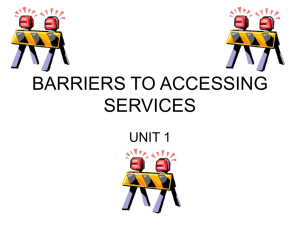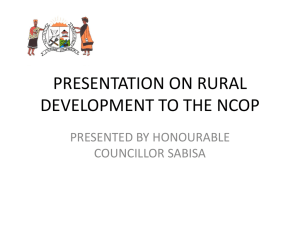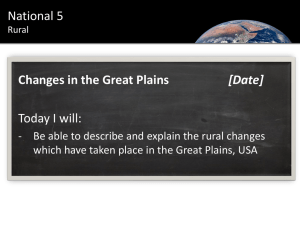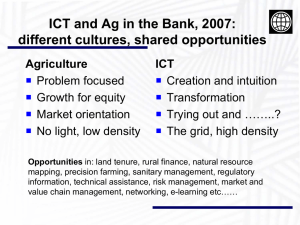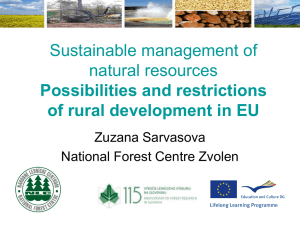USDA Forest Service - State of New Jersey
advertisement
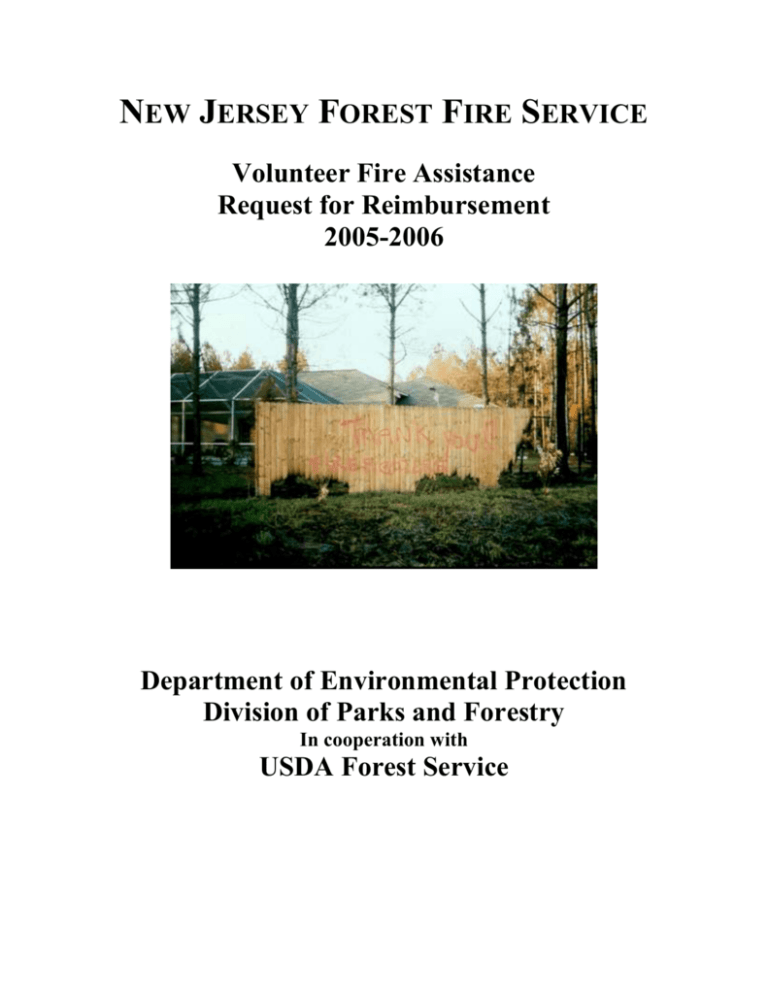
NEW JERSEY FOREST FIRE SERVICE Volunteer Fire Assistance Request for Reimbursement 2005-2006 Department of Environmental Protection Division of Parks and Forestry In cooperation with USDA Forest Service Introduction The Volunteer Fire Assistance Program (VFA) is a United States Forest Service Grant program administered by all 50 State Forest Fire Protection Agencies to provide funding to organize, train, and equip fire departments in rural areas and rural communities. The program was initially authorized in Title IV of P.L. 92-419; the rural development Act of 1972. Presently the program is authorized under Section 10(b)3 of P.L. 95-313; the Cooperative Forestry Assistance Act of 1978. Program Goals Organize, train, and equip fire departments in unprotected rural areas and rural communities. Assist qualifying fire departments in saving lives and protecting property in unprotected or inadequately protected rural areas. Prevent or reduce loss of life, protect financial investments and enhance environmental quality to revitalize rural America. Increase the opportunity for rural fire departments to acquire Federal Excess Personal Property, training, and current information on techniques of fire prevention. 50:50 Cost Share Program There is no maximum amount an eligible fire department or community may request, however the number of requests, and the funding available limit the awards. In no case, will the Forest Fire Service fund more than 50% of an accepted application. Fire Departments may apply for funding of multiple projects or purchases. The applicant’s matching contribution must be from sources other than federal grants. Generally, the Forest Fire Service will reimburse your organization up to 50% of approved maintenance or purchase of equipment, costs associated with training, or acceptable prevention programs. Eligibility Requirements The following are examples of eligibility requirements for use of VFA funding. 1. 2. 3. 4. 5. A single fire department serving a rural area or a rural community with a population of 10,000 or less is eligible (using the latest Census data). Area fire departments (fire districts, townships, etc.) may serve an aggregate population of greater than 10,000 as long as the service area of the fire department includes a rural area or a rural community having a population of 10,000 or less. The VFA funding must be used to benefit the rural population. A single county or town with a population over 10,000 which is served by two or more fire districts operating entirely within the bounds of the county or town may qualify as long as the service area of a given fire department includes a rural area or a rural community or the population of the fire department's jurisdiction is 10,000 or less. The VFA funding must be used for the rural area. A single community with a population greater than 10,000 and having a single fire department with one or more fire stations may qualify. The fire department must have a service area that includes a rural area or community that does not exceed 10,000 population. The VFA funding must be used only for the benefit of the rural population. Similarly, a single community with a population greater than 10,000 that also provides fire protection to an adjoining rural community of 10,000 or less population by contract may also be eligible provided the VFA funding is used entirely to support the rural community. A single community fire department serving a population greater than 10,000 and not providing protection to a rural area or to a rural community is not eligible for VFA financial assistance. There are several administrative considerations concerning eligible departments: While paid fire departments are not excluded from participation in the VFA Program, targeting of grants to qualifying fire departments having a membership comprised of at least 80% volunteer firefighters is encouraged. All qualifying communities and fire departments must comply with any specific criteria established by the New Jersey Forest Fire Service, and consistent with requirements established by the US Forest Service. As an example, the State Forester could require each eligible rural community to have a signed cooperative fire protection agreement with the NJ Forest Fire Service. The community share (match) of the financial assistance must be available at the time of application. Applicants may not derive their share from other sources of Federal assistance. The community share of the financial assistance can be in the form of cash or "in-kind" contributions. Examples of in-kind contributions would be volunteer labor for some projects; such as installation of dry fire hydrants or donation of services such as the use of volunteer instructors to present a training course. VFA grants may be approved to fire training academies and rural fire departments, including those operated by federally recognized Indian tribes. Training recipients must come from fire departments that qualify for VFA funding. States may retain funding for program administration and to provide centralized purchasing, conversion or rehabilitation of Federal Excess Personal Property equipment, or training where the State Forester provides these services directly to Rural Fire Departments. Federal VFA funding must be matched at least 50% by rural fire departments and training academies and must qualify for VFA funds. Remember that the applicant must be the entity that actually paid the submitted bills. This may be your town or fire district, as well as your fire department. Some examples of eligible uses of VFA funding include, but are not limited to, the following: Multi-community/fire department projects such as mutual aid communications networks. Projects developing static water supplies, such as dry hydrants and cisterns. Conversion of Federal Excess Property Program (FEPP) vehicles to water tenders, engines, brush or equipment trucks. Fire prevention activities conducted by local fire departments. Purchase of communication equipment to assist in the dispatch of firefighters such as pagers and portables. Purchase of equipment that aids in the suppression of rural fires, such as portable pumps, hose, slip-on units, fold-a-tanks, etc. Purchase and maintenance of safety equipment, such as SCBA, protective clothing, and PASS devices. VFA funding is not authorized for purchase, construction or renovation of capital improvements such as fire stations or pressurized water systems. Loans are available through other Federal sources for these purposes. The period for eligible purchases during this year’s cycle of funding extends from October 1, 2003 through April 1, 2005. Proposal for Reimbursement Prospective applicants must submit the attached proposal for reimbursement to their respective Forest Fire Service Division Office before February 1, 2006. A comprehensive description of the projects and/or equipment to be considered is required for ranking your application. If your proposal is accepted, your department will be notified, and a grant application package will be provided to you. You will be required to return the completed application no later than March 30, 2006. The application will include a signed grant form, signed resolution authorizing your department to apply for the grant, a completed W-9 form showing your organization’s federal taxpayer ID number, a map of your department’s response area, and proof of expenditures for the reimbursement you are requesting. This proof may include cancelled checks, or paid invoices. Expectations All successful applicants will be responsible to adhere to the provisions of P.L. 95-313, Sec. 10(b) 3 It should be noted that awards for any single piece of equipment more than $5,000 are covered differently than those costing less. This difference is most evident in the rules covering the eventual disposal of these pieces of equipment. A reasonably comprehensive overview of these regulations may be found at: www.fs.fed.us/fire/planning/help/guide.htm#manage For the above reasons, award requests for single pieces of equipment in excess of $5,000 will only be considered in exceptional cases. The successful recipient of a grant must agree to assist the NJ Forest Fire Service, if possible, with emergency operations when requested to do so. Evaluation Criteria Each application will be awarded points based on the following: The proposed uses for the funds The size of your community The percentage of open (i.e. rural) land you are responsible for. The percentage of your department that is volunteer. The percentage of funds raised through fund drives and fund raising activities. Your participation in an organized response plan, such as a county forest fire task force, or being included in a Forest Fire Service response plan. Consideration may also be given to the length of time since your last award. Submission of Proposal for Reimbursement Proposals must be received by your appropriate Forest Fire Service office (listed below) by February 1, 2006 Sussex, Warren, Hunterdon, Passaic, Bergen, Essex, Union, Hudson, Morris and Somerset Counties: NJ Forest Fire Service 20 Rte. 23, Franklin 07416 (973) 827-6100 Middlesex, Monmouth, Ocean, Burlington, and Mercer Counties: NJ Forest Fire Service PO Box 239, New Lisbon 08064 (609) 726 9010 Atlantic, Gloucester, Camden, Cape May, Salem, and Cumberland Counties: NJ Forest Fire Service 5555 Atlantic Av., Mays Landing 08330 (609) 625-1121 If your proposal is accepted, completed applications must be returned by March 30, 2006 Volunteer Fire Assistance Proposal for Reimbursement: 2005-2006 1. Name of Fire Company County _______________________________ Municipality _____________________________ 2. Amount of Award Requested 3. Describe the uses to which funding will be applied. (You may use the attached checklist, or attach extra pages if necessary) Total Spent: $___________ 50% request: $___________ 4. What is the population of your response area? 5. What percentage of your response area is open space? 6. What percentage of your Department is volunteer? 7. What percentage of your annual budget is derived from fund-raising and annual donations? 0-25% 26-50% 51-75% 75%+ 8. Does your Department participate in an established wildland fire defense plan in cooperation with the New Jersey Forest Fire Service? Yes ___ No ___ If yes, explain: 9. How long has it been since your Department last received funding from this grant? 10. Contact person: Name:___________________ Title:_________________ Address: _______________________________________ Phone Number: ______________Fax: _______________ E-mail: _________________________________________ VFA EXPENSE CATEGORIES AMOUNT YOU CAN DOCUMENT: A. Equipment (Examples might include PPE, communications, firefighting tools, etc.) $___________________________ B. Vehicle Conversions $___________________________ (FEPP vehicles, rural firefighting units, etc.) C. Training and Prevention $___________________________ D. Maintenance and Service $___________________________ E. Other (Provide explanation) $___________________________ Total $___________________________ Requested Amount (50% of total) $___________________________
